A Closer Look, Testing
The CPU was sent to us from AMD sans the usual retail packaging, so here’s a shot of the chip itself:
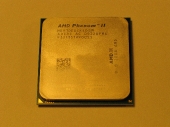
Testing was conducted on the following system:
- CPU: AMD Phenom II X4 910e @ 2.60 GHZ
- Motherboard: Gigabyte MA785GPMT-UD2H
- Heatsink: GlacialTech F101
- RAM: 2x2GB Crucial Ballistix DDR3-1333, 8-8-8-20 default timings
- HDD1: Seagate Barracuda 7200.10 500GB SATA-II; single-drive mode
- HDD2: Western Digital Caviar GreenPower 500GB SATA-II (5900RPM); single-drive mode
- GPU1: ATI Radeon HD 4830, 512MB GDDR3 memory
- Sound: Creative Labs X-Fi Titanium Fatal1ty Edition
- Case: Silverstone FT-01 Fortress
- OS: Windows 7 Ultimate 64-bit
- Drivers: Catalyst 9.12
SiSoft Sandra
First we’ll look at the results from Sandra’s CPU benchmark suite, which offers narrowly-focused tests for several aspects of CPU performance.
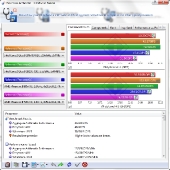
As expected, the 910e comes in ahead of its lesser brethren, though it lags a bit behind its near competitor from Intel, the Core 2 QX6700. None of the scores are shoddy, however, with the 910e coming in at 40.3 billion instructions per second, and 30.35 billion floating point operations per second.
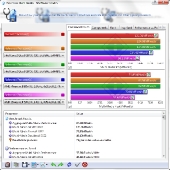
Same story here, the 910e comes in ahead of the 805 and 720, but lags a bit behind Intel’s offerings. Not much to say about the objective worth of this test, since the details of the algorithms and source image used are not given.
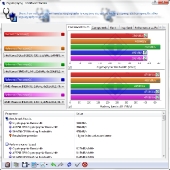
In an interesting real-world application, Sandra’s Cryptography test measures performance in data encryption and hashing, two very common applications. The 910e posts very respectable numbers here, only lagging behind Intel’s comparable offering by a small amount. In an interesting inversion, it actually comes out ahead of the Core i7 860S in the hashing test by a considerable margin.
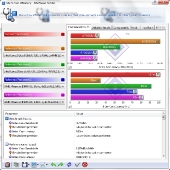
In the multi-core efficiency test, we see the continuation of a long-familiar tale: AMD’s offerings continue to lag behind Intel’s by a significant amount in inter-core communication. The 910e actually manages to edge out the 925 and 940 in the inter-core bandwidth test, which is unusual. The inter-core latency test results are somewhat poor, however, with the 910e posting an average latency nearly three times that of Intel’s comparable offering.
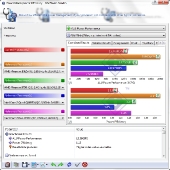
In what is perhaps the most opaque test of the lot, Sandra’s Power Management Efficiency test measures ALU performance and attempts to correlate it to power consumption in a way that is not explained. Somewhat unsurprisingly, the 910e posts in behind the 925 for raw instruction throughput, though it does manage to stay significantly ahead of Intel’s similarly-clocked offering this time.

Do you peferr Intel over AMD or vice versa. I peferr Intel still even though AMD is clearly starting to give them a run for their money. I don’t particularly like Asus boards. I had bad experiences with Asus in the past. I peferr MSI, Intel, and Gigabyte.